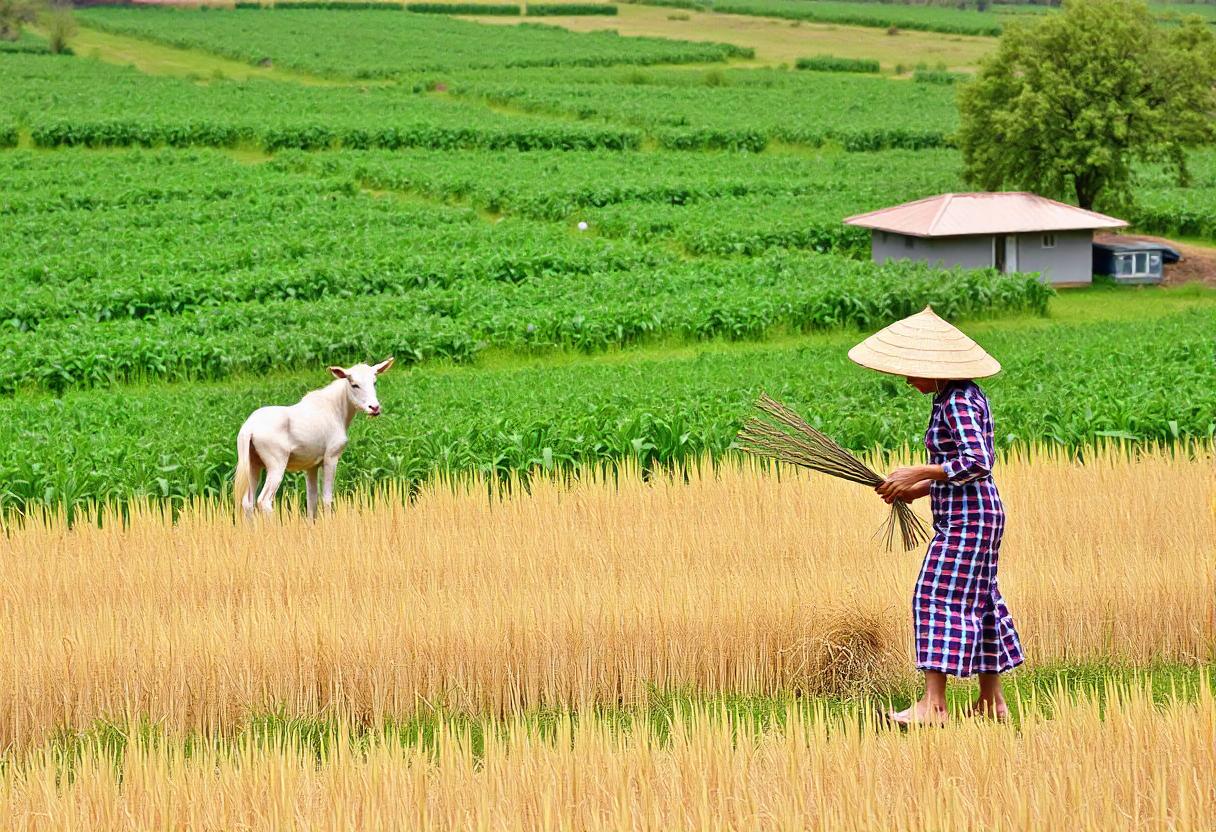
The Agricultural Revolution marks a period of transformative change in agriculture, which profoundly influenced societies across the world. It refers to two distinct phases: the Neolithic Agricultural Revolution and the Second Agricultural Revolution, each contributing to significant advancements in farming techniques and societal organization.
The Neolithic Agricultural Revolution
The Neolithic Agricultural Revolution, also known as the First Agricultural Revolution, began around 10,000 BCE in the Fertile Crescent. This period was characterized by the transition from nomadic hunter-gatherer societies to settled agricultural communities. Key developments during this era included:
- Domestication of Plants and Animals: Early farmers began to cultivate crops like wheat, barley, and legumes, while also domesticating animals such as sheep, goats, and cattle. This shift enabled more reliable food sources and the growth of permanent settlements.
- Development of Farming Tools: Innovations in farming tools, such as the plow and sickle, facilitated more efficient cultivation and harvesting of crops. These tools were crucial in increasing agricultural productivity and supporting larger populations.
- Establishment of Permanent Settlements: As agriculture became more productive, people settled in one place, leading to the development of villages and, eventually, complex societies. The ability to store surplus food also led to specialization in various trades and crafts.
The Second Agricultural Revolution
The Second Agricultural Revolution, which began in the 17th century and continued into the 19th century, brought about significant changes in agricultural practices in Europe. This period saw the introduction of new techniques and technologies that greatly enhanced farming efficiency and output. Key aspects included:
- Enclosure Movement: The enclosure movement involved consolidating small, scattered plots of land into larger, more manageable farms. This allowed for more efficient farming practices and better management of resources.
- Crop Rotation Systems: The development of crop rotation systems, such as the four-field rotation system, improved soil fertility and reduced the risk of crop failure. This practice involved alternating different types of crops in a specific sequence to maintain soil health.
- Advancements in Technology: Innovations such as the seed drill, invented by Jethro Tull, revolutionized planting techniques by allowing for more precise and efficient sowing of seeds. Additionally, improvements in machinery, such as the mechanical reaper, increased the speed and efficiency of harvesting.
Impact on Society and Economy
The Agricultural Revolution had a profound impact on both society and the economy. It led to:
- Urbanization: As agricultural productivity increased, fewer people were needed to work the land, leading to the growth of cities and urban centers. This shift contributed to the rise of industrialization and changes in social structures.
- Economic Growth: Increased agricultural output supported population growth and economic expansion. The surplus of food allowed for trade and the development of markets, fostering economic growth and innovation.
- Social Changes: The Agricultural Revolution contributed to changes in social hierarchies and labor systems. The rise of agricultural surpluses and trade created wealth and power dynamics, influencing social structures and relations.
Global Influence
The effects of the Agricultural Revolution were not limited to Europe; they spread globally, influencing agricultural practices and societal structures in various regions. For instance:
- Spread to the Americas: The techniques and technologies developed during the Second Agricultural Revolution were adopted in the Americas, where they contributed to agricultural expansion and economic growth.
- Technological Transfer: Innovations in farming technology and practices were transferred to other parts of the world, impacting agricultural productivity and development in diverse regions.
- Impact on Colonization: The advancements in agriculture supported European colonization efforts by enabling the establishment of settlements and the exploitation of new lands for agricultural production.
Ongoing Agricultural Developments
The legacy of the Agricultural Revolution continues to influence modern agriculture. Ongoing advancements in technology, biotechnology, and sustainable farming practices build upon the foundations laid by earlier agricultural revolutions. Key areas of focus include:
- Precision Agriculture: The use of technology, such as GPS and drones, to optimize farming practices and improve crop yields.
- Sustainable Practices: Efforts to develop environmentally friendly farming techniques that conserve resources and reduce environmental impact.
- Biotechnology: Advances in genetic engineering and biotechnology that enhance crop resilience, productivity, and nutritional value.
The Agricultural Revolution represents a pivotal chapter in human history, marking the transition from subsistence to advanced agricultural practices that continue to shape societies and economies worldwide.